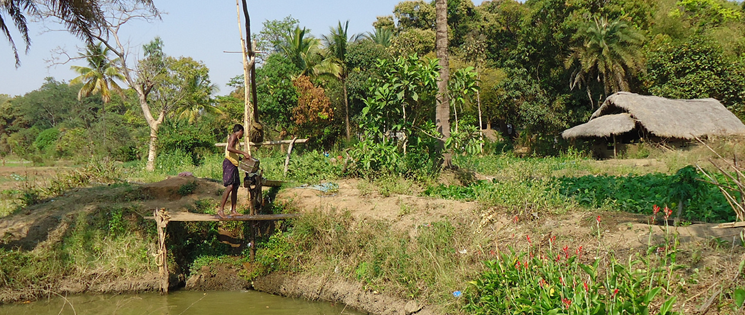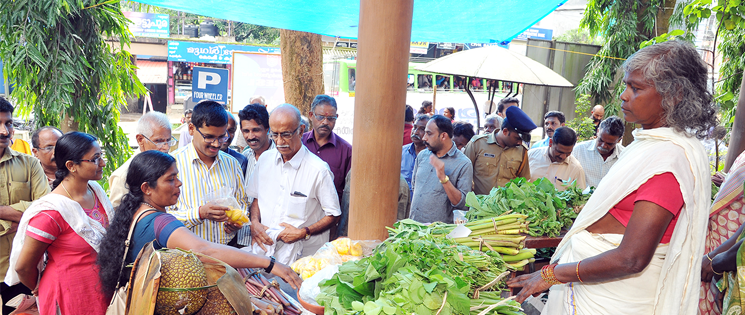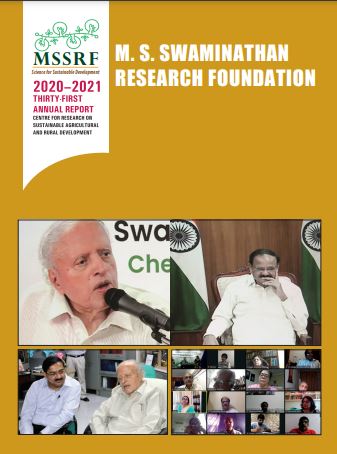| Species and Varieties conserved on-farm: |
| JY – Paddy (136), Millets (\) (50), Vegetables & Fruits (69) and Tubers (13) and Pulses (16) conserved on-farm and 384 species of medicinal plants |
| KH – Varieties of Millet (15), Spices (9), Banana (5), Spices (4), Pulses (10), Oil Seeds (2), Tubers (3), Vegetables (11), Fruits (10), Cash Crops (6) |
| WY – Varieties of Rice (20), Tuber (36), Medicinal Plants (70), Pepper (26) Pulses (20), Citrus (10), Wild Leafy Vegetables (30), RET Species (110), Medicinal Plants (15), Turmeric (3), Banana (27) – On-farm for consumption and local markets and Farmer Producer company |
|
| Seed banks Nurtured: |
| JY -17 Community Seed Banks and One (01) Central Seed Bank in the Campus |
| KH – 15 Community Seed banks maintained by communities |
| WY – 20 Seed Villages – Traditional varieties are produced and Custodian Farmers |
| Improved Agronomic practices demonstrated: |
| JY- Seed Treatment, IPM, INM, IDM, SMI, LT, LS, Intercropping, demonstrated in Millets, Rice, Pulses and Vegetables |
| KH – Varietal demonstration, Intercropping, Line sowing in Millets, Rice Pulses, Tapioca, Banana |
| WY- SRI for Rice, Modified System of rice intensification (Rainy Season), Raised bed method and Intercropping – Elephant Foot Yam |
|
| Yield enhancement of varieties realised: |
| JY – On an average 35% yield enhanced in millet and 25% in case of rice. |
| KH – 33 % of Yield enhanced in millets and 30 % pulses |
| WY – 25 % in yield in Rice varieties and 20 % EFY |
|
| Improved Technologies Scaled up on farm: |
| JY -1850 acres covered under improved technologies like – SMI (564) and LT (1286) acres |
| KH – 500 Acres line sowing, 250 Acres of varietal demonstrations, 250 Acres of intercropping |
| WY – SRI and Modified Rice Planting in Rice |
|
| Integrated Agroforestry, Homestead Farming and Mixed Crops Farms extended |
| JY – Agriculture based model and Aqua based model extended to 100 farm families |
| KH – 1500 acres of Integrated Multi-tier farming system developed and 2800 Home Nutrition garden extended |
| WY – 800 Acres of Agroforestry developed, 500 acres of Homestead farming, 200 Mixed cropping farms with fruit trees, coffee, pepper, roots and tuber and vegetables in Kerala |
|
Farmer Producer Companies promoted: |
| JY: Three (03) FPOs in Koraput District and One (01) in Ganjam District formed with 800 members. |
| KH – One FPO in Kolli Hills dealing with Spices, Millet and Fruits with 583 tribal members |
| WY – One FPO in Wayanad dealing with Spices, Rice and Vegetables with 300 memberships |
|
| Farmers groups and Self-Help Groups nurtured |
| JY – 92 Farmers groups formed as CBOs |
| KH – 110 groups of Women and Men as CBOs |
| WY – 35 groups Kudumbashri SHGs are linked |
|
| Processing units established: |
| JY –10 Pre-cleaning and processing units established for finger millets. |
| KH – 15 processing units of Millets, Pulses, Rice |
| WY -2 Processing units – 17 Species are of Medicinal plants |
|
| Agrobiodiversity based products developed: |
| ·JY: Ten (10) Products developed – Millet Laddu, malt, chikli, mixture, sweets, Jackfruit chips, tamarind briquettes, kalajeera processed rice, little millet, foxtail millets and barnyard millet processed rice. |
| KH – 18 Value Added Products of Millets and Pulses and Spices; Developed “Millet Market” android app” in partnership with IIMR |
| WY – Jackfruits chips, Wild Mango Pickles, Bamboo shoots, Gandasala, Thondi, Veliyan, Jeerakasala rice, Honey |
|
| Botanical gardens established: |
| JY – Tribal Botanical Garden conserved & protected 384 medicinal plant species and 94 Crop genetic resources |
| §WY – MSS Botanical garden harbors 1600 species in natural environment |
|
| Peoples Biodiversity Register developed: |
| JY – 17 PBRs and 36 BMCs formed |
| KH – 1 Block level PBR and 1 BMC formed, Heritage sites recommended under TNSBB |
| WY – 5 PBR developed and 5 MBCs formed |
|
| FAO -GIAHS study 2020: A study was conducted and submitted a report on the Globally Important Agriculture Heritage system in Koraput and Kuttanad to bring to attention of FAO on the impacts of declaration as GIAHS site. |
| FAO- GFAR Forgotten crops study 2021. MSSRF has contributed to the development of South Asia Manifesto on Forgotten Crops. This effort has helped to develop Global Manifesto on Forgotten crops, Plan of Action and Community Practices around the world. |



